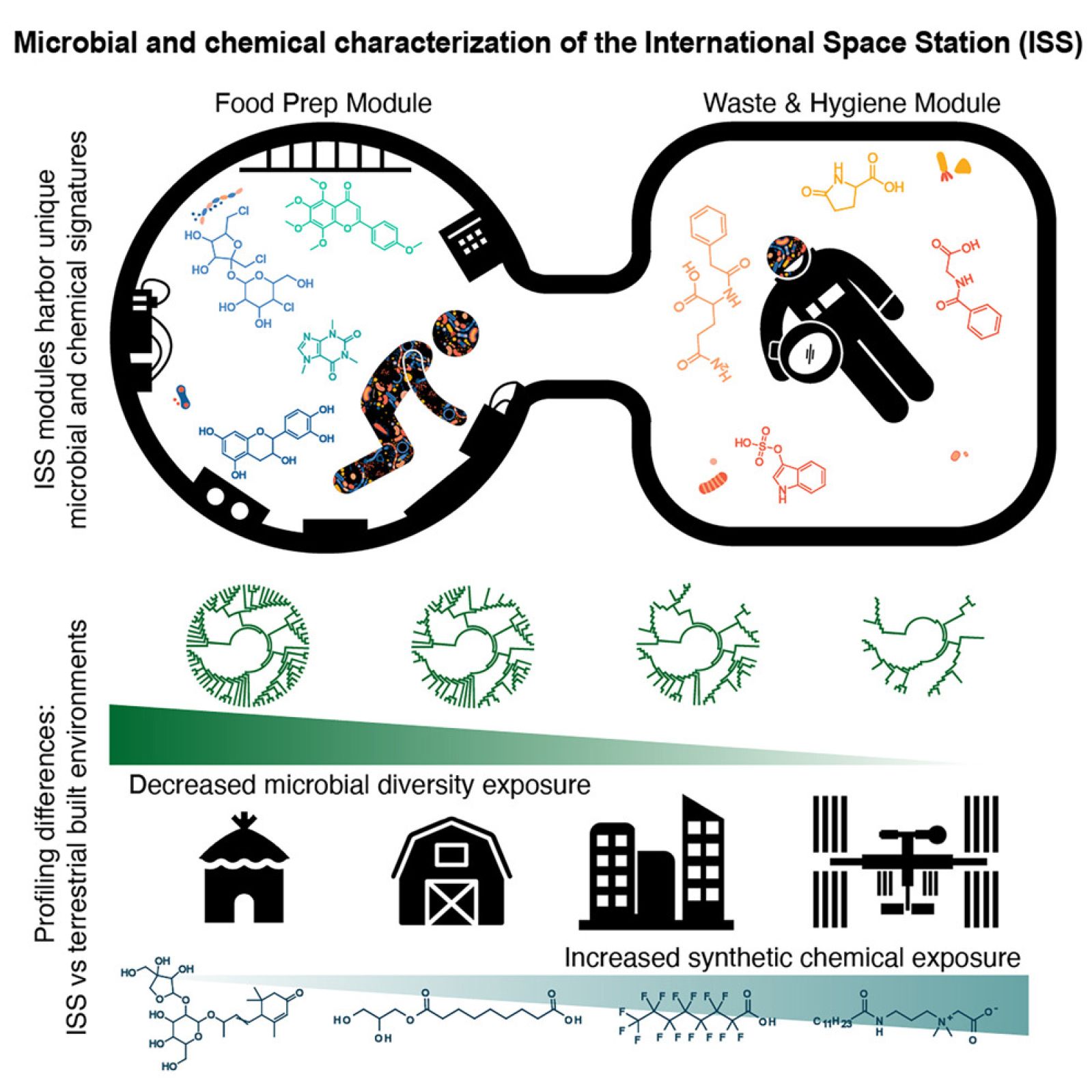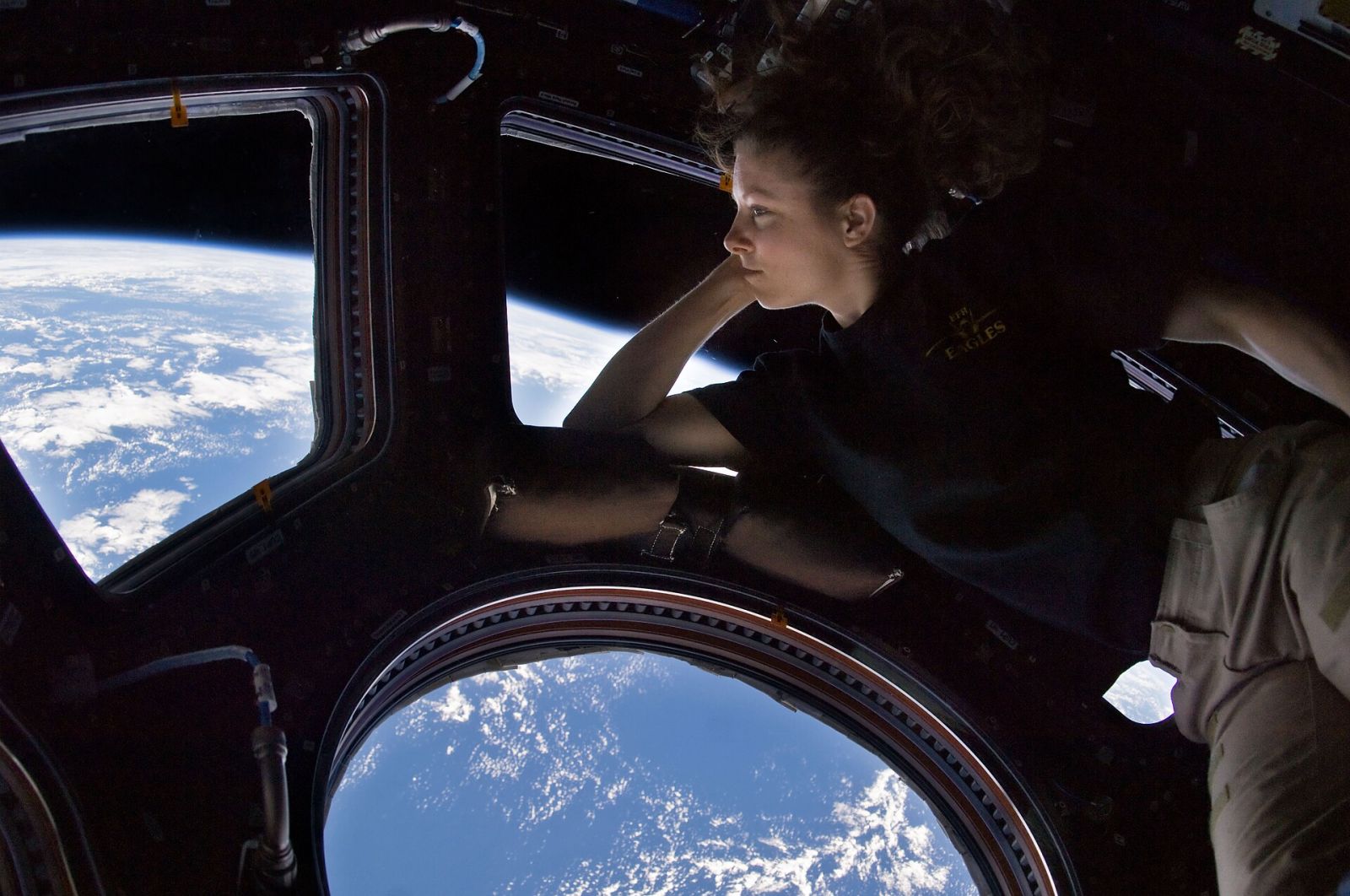Follow us on Google News (click on ☆)
Astronauts often suffer from health issues in microgravity, such as skin rashes or immune dysfunctions. These problems could be linked to the lack of microbial diversity on the ISS, an environment dominated by human microbes and cleaning product residues. Researchers propose an innovative approach: reintroducing microbial ecosystems to recreate a balance closer to that of Earth.
A depleted microbial environment
The study, conducted by researchers at the University of California, San Diego, analyzed 803 samples taken from the ISS. The results show low microbial diversity, primarily composed of bacteria from human skin, food, and waste. Free-living microbes, such as those from soil or water, are almost absent.
Disinfectants, ubiquitous on the ISS, contribute to this microbial uniformity. Researchers found that their excessive use further reduces the diversity of microorganisms. This situation resembles that of hospitals or enclosed habitats on Earth, where intensive sterilization limits beneficial interactions with natural microbes.
The ISS modules host distinct microbial communities depending on their use. For example, food preparation areas contain microbes related to food, while space toilets harbor bacteria associated with human waste. This distribution shows that human activity shapes the station's microbial ecosystem.
Towards a more natural approach
Researchers suggest introducing beneficial microbes, such as those from soil, to recreate a healthier environment. This idea is inspired by the benefits of gardening on the immune system. Such a change could improve astronauts' health without compromising the necessary hygiene in space.

The team also proposes rethinking the design of future space stations. Incorporating gardens or miniature ecosystems could promote balanced microbial diversity. This approach would support astronauts' health during long-duration missions, or even space colonization.
Finally, researchers envision using these findings to improve closed environments on Earth, such as hospitals or isolated habitats. Better management of microbial ecosystems could thus benefit both space explorers and terrestrial populations.
To go further: What is a microbiome?
The microbiome refers to the collection of microorganisms, mainly bacteria, but also viruses, fungi, and other microbes, that live in a specific environment. These microbial communities are present everywhere: on the skin, in the intestines, in soil, water, and even in the air.
Each microbiome is unique and adapted to its environment. For example, the human gut microbiome helps digest food, synthesizes vitamins, and strengthens the immune system. Similarly, soil microbes play a key role in decomposing organic matter and nutrient cycling.
Interactions between microbes and their host are often beneficial. They form a balanced ecosystem that protects against pathogens and maintains health. However, an imbalance, called dysbiosis, can lead to health problems, such as infections, inflammation, or chronic diseases.
Understanding and preserving microbiome diversity is essential, whether for human health, agriculture, or even space exploration. On the ISS, for example, a balanced microbiome could help astronauts better withstand life in microgravity.
